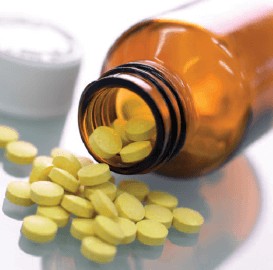Medications – What you should know!

Here are some common medication questions—with answers!
Are generics and branded drugs identical?
Patients wonder why generics don’t look or taste the same as branded drugs, and they worry about generics’ side-effects. According to the Food and Drug Administration (FDA), “The active ingredient (in generic drugs) is chemically the same as the branded counterpart.” Regarding appearance, they cannot look identical because in the United States, trademark regulations prevent the sale of generic drugs that look exactly like the brand-name drug. Also, inactive ingredients such as flavors and preservatives, and the manufacturing process may differ. Side effects and treatment efficacy may vary based on these and other subtle differences. So while these drugs are not exactly identical, generics will often be recommended when they are available. Most patients will ask for the generic prescription option, since it is almost always a cost savings.
Not all drugs have a generic counterpart. In being your own health care advocate, I suggest if the pharmacist offers a generic substitution, check with our office to determine what is most appropriate for you.
What about off-label drugs?
In the United States new drugs are tested in three phases of clinical trials (research studies) before they are approved for use by the general public. The clinical trials are done to prove that the drug effectively treats a certain medical condition, works the way it is supposed to, and is safe when used as directed. When the FDA is satisfied that the drug is safe and effective, it works with the maker of the drug to create the drug label. This is not an actual label that sticks onto a container, but a report of very specific information. The FDA also must approve this report, which is made available to physicians and pharmacists who prescribe and dispense the drug. The drug label contains information about the drug, including the approved doses and how it is to be given to treat the particular medical condition for which it was approved. When a drug is used “off-label” it is most commonly given for a different disease or medical condition than described in the FDA-approved label. Or, it may be given by a different route, or in a different dosage.
For example, most of us are familiar with the benefits of Botox Cosmetic as a facial wrinkle treatment. Botox injections for migraines were discovered accidentally during clinical testing for Botox Cosmetic. When test patients who normally suffered from headaches reported fewer facial lines and fewer migraines, Botox began its progression from popular cosmetic treatment to medical remedy.
Botox injections for migraines are currently in Phase III of their clinical studies. While the treatment has not yet been FDA-approved for migraines, these injections for headaches are commonly administered by physicians as a viable treatment option. This is considered off-label use. When doctors discover that an off-label use works well, it can become the “standard of care.”
Is it OK to split pills in half?
The answer is – sometimes. Generally, a pill that is twice your normal dosage costs about the same as the smaller dose. So, by splitting double-dose pills in half, your savings could be substantial. The pills best suited to splitting – and according to some medical professionals, the only pills – are those scored down the middle, making them easier to divide. But splitting only works well for certain medications, and numerous reports warn that some pills should never be split. Examples include: longacting, extended- or continued-release tablets or capsules, any capsules that contain powders or gels, birth control pills, and chemo therapy drugs. If you are thinking about splitting your pills, talk to my office about which of the medications you take can be split safely… and be sure to purchase an inexpensive pill-splitting device rather than using a knife.
What are the effects of medication on taste?
Some drugs cause food to taste differently, or they can cause a metallic, salty, or bitter taste in your mouth. Clinical studies have implicated over 250 drugs that can alter taste sensations. And, while it is not known exactly how these medications influence taste, it has been established that medications can have an impact on taste through decreased secretion of saliva. This side effect from certain medications can also lead to problems with chewing and swallowing food. In turn, some patients decrease their food intake, which can be dangerous for many people—especially those who are older or who already have health problems. If your symptom is significant, please call our office as sometimes there can be alternative solutions.
Is it safe to take drugs that have expired?
Today the general consensus from pharmaceutical professionals is that most expired drugs are safe to take for a limited period of time after the expiration date. The expiration date on both prescription and non-prescription medication signifies that the drug will remain at full potency up until that date. However, this does not mean that drugs past this expiration date are necessarily unsafe to use or are spoiled. Before taking a pill beyond the expiration date, keep in mind that liquid medications and medications that have been stored in a warm, moist environment degrade more quickly than solid medications that have been stored in a cool dry place. All of the above being stated, use your own good judgment. The wisest choice with an expired drug is to call your pharmacy and ask before you take even one dose. After all, good health is a collaborative effort!

